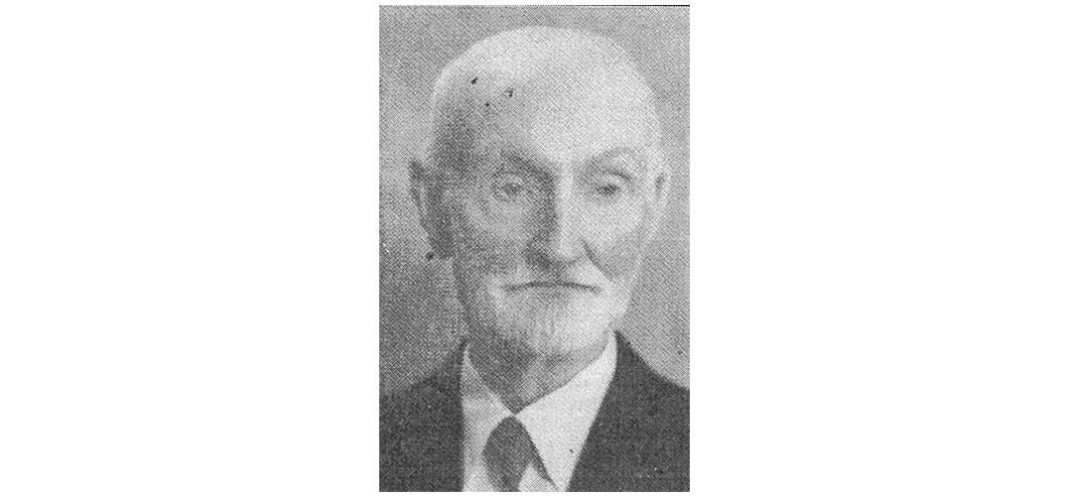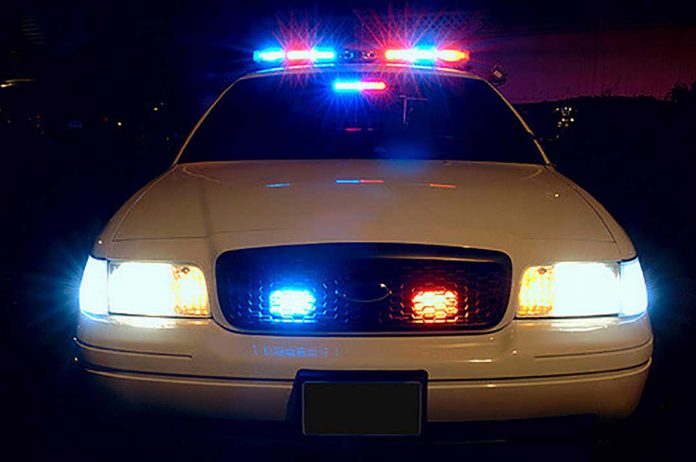EDITOR’S NOTE: The following article, penned by Expositor founder William Loe Smith, appeared on Page 1 of a special 1939 edition of The Expositor, marking the paper’s 60th anniversary. Below, Mr. Smith reflects on his early years at The Expositor and the first edition. Some of the language used reflects the period.
Founder of the Expositor
W.L. Smith
In the winter of 1878-9, J.H. Stinson, whom I had known since boyhood, and who, sixty years ago, was owner of one of the principal stores in Manitowaning, suggested that I consider the advisability of establishing a newspaper in the village. In answer to my request for particulars as to the prospects for such a venture Stinson urged me to go up to the Island at once and look over the ground for myself.
The one means of reaching the Island in the depth of winter from my home then near Barrie was by way of Parry Sound and the winter mail route over the ice or along the shore of Georgian Bay. The old Northern Railway, which provided transportation for the first part of the route to be covered, then ended at Gravenhurst. From that point to Parry Sound the only transportation available was that provided by an old-time stage-coach. At Parry Sound I connected up with the Indians who carried the mail from that point, by way of Killarney, to Little Current. For the first 30 miles, to Shawinagah, we travelled on land with real beds at night but from then on it was ice all the way to Killarney, dogs hauling the mail on sleds and the humans walking. After leaving Shawinagah we carried our food supply with us, the Indians preparing the meals over an open fire on the nearby shore. The Indians also prepared the beds on shore at the end of each day. The preparation of beds was a simple matter with the Indians digging a hole in a snow bank on shore, sticking evergreen to serve as a windbreak on the windward side of the hole, starting a fire at one end of the hole in the snow to keep feet warm and then rolling up in blankets laid on a bed of small spruce branches with the sky for a roof, dogs and humans sleeping together.
And it was cold! More than thirty degrees below, as I learned afterwards at Little Current, and it was certainly colder than that on the coast line of Georgian Bay. The last day and night were the worst of all. The Indians had wasted time all along for something over the first half of the route and then determined to make up for it on the last lap. We started, from a point considerably south of French River, well before daylight engaged a horse and sleigh at the Indian village on Grumbling Point to relieve the dogs of their loads of mail, then started the twenty-mile tramp to Killarney. That, however, was too much even for the Indians and, when we were still some ten miles short of our goal for the night, mail bags were dumped on the ice and the whole party piled into the horse drawn sleigh and cuddled under the blankets. It was midnight when, half frozen, we reached Killarney. There, rolled in blankets, we slept on the floor of the post office until wakened by the voices of the bay. The snow-covered landscape, beautiful sunshine above and smoke curling from chimneys in the village made a marvellous combination.
Best of all was what occurred on reaching the village—warm greetings from a boyhood friend, lemon pie and beefsteak instead of Chicago mess and choke-dog and the sound of speech I could understand.
On the way to the Island I had worn boots as I had never seen moccasins or snow shoes before that time but at Manitowaning Stinson fitted me out with moccasins and snow shoes and I had daily exercise with them. The result was, after a couple of weeks practice, I was able to make good use of both. And it was well that I could because the return journey to Parry Sound was made in less than half the time spent on the way north. We left Killarney about nine at night and reached Grumbling Point at three the next morning; after three hours sleep we were off again and made camp at Bying Inlet for the night. Next day we reached Shawinagah and arrived at Parry Sound the following night one hundred and twenty miles in seventy-four hours. It was then March and, although I wore goggles on the journey I could not see well enough to read for a couple of days after reaching Parry Sound and shaving because of a blistered face had to be postponed for a still longer period.
In Toronto I purchased a Washington hand press for printing the paper and posters and a Gordon for the printing of letter heads etc. as well as an outfit of type. I engaged John S. Arthurs, good old John, he passed out last winter, to assist me in getting out the paper. The plant arrived at Manitowaning by boat on a Sunday. All week John and I toiled in getting the Washington together the type into the cases, the type set and into the forms and on Saturday night the paper went to press.
The office was an old one storey frame building that had been used as a store. There was barely room enough for the plant and staff and we had to lock the door to keep the crowd out when we went to press.
“I can still see the mass of faces pressed against the large front window as John worked the hand ink roller and I the handle of the press in getting out No. 1 Vol. 1 of The Manitoulin Expositor, with the date May 24, 1879.”
– W.L. Smith, 1939
There have been vast changes since that day. The first newspaper office, with the Tinkis store on one side and Commercial hotel on the other, years ago went up in smoke. Human changes have been infinitely more distressing. Of all born in my time and living in Manitowaning in ’79, I do not know of one who is left. My old friends Batman, of Sheguiandah, and Jenkins of McGregor Bay are of the few of around my own age, left of all who were living anywhere on the Island when the first issue of The Expositor went to press.
Other changes have occurred as well. In 1879 the whole territory from Bying Inlet to the western limits of the province was one electoral district (Algoma) with one representative in the legislature and another in the Commons. There were no telephones then and the nearest telegraph station was at Garden River. In winter the weekly mail from Parry Sound brought papers anywhere from a week to three weeks old. On one occasion, as the ice was breaking up in spring, we were three weeks without mail from anywhere.
Even in the winter of ’85, the year of the second Riel Rebellion it was a little better. I happened, in that winter to be driving with W.R. Abrey over the ice to the Sault. At Garden River a telegram informed us of the first encounter between the rebels on one side and Mounted Police and local volunteers on the other. At Serpent River, where there was also by that time a telegraph station, I received on the return journey a wire from A.C. Campbell, then of the Globe but later on the Hansard staff at Ottawa, stating that the Queen’s Own and Tenth Royals were at the small unfinished section of the C.P.R. north of Lake Superior. After receiving this message Abrey and I continued on our way home.
The spring break up of the ice had then begun and we had no further news until the first boat arrived in May with news that Riel had been captured and the rebellion was over. A generation has passed and the whole world has changed since the first issue of The Expositor went to press. And not least of the changes have occurred on good old Manitoulin, the Island home to which I often look back and see again the magnificent view from Ten Mile Point and the glow of the North Shore mountains in March as the setting sun casts its last ray on the snow capped peaks.
Still clearer is the memory of the many warm friends of the good old Manitoulin. But in this case memory brings the painful realization that the voices which then brought joy have since been forever stilled.
(Reprinted from the July 13, 1939 special Diamond Jubilee edition of The Manitoulin Expositor.)




